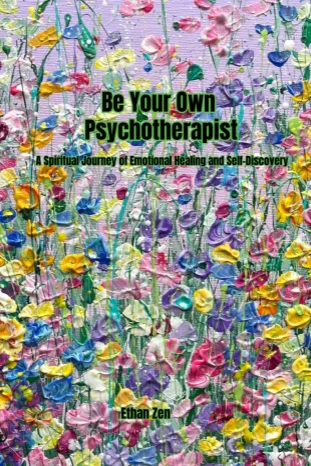Therapist’s Perspective: The Healing Code of Nonviolent Communication
Xiaoya curled up on the soft blue couch of the therapy room, her shoulders trembling, mascara trailing down her cheeks like the shadows of an inner storm.
“He always forgets our anniversary. I don’t think he loves me anymore,” she whispered, her voice trembling between sadness and frustration.
She was 26, intelligent and sensitive, yet caught in a cycle of emotional outbursts and exhausting quarrels with her boyfriend. As she spoke, she circled the same themes—his neglect, her anger, their arguments—like a bird flying helplessly against invisible glass.

The Limit of Traditional Approaches
Conventional therapeutic models often begin with analysis: “Why did he forget?” or “How can you express your needs better?” But beneath these strategies lies a more essential truth, one that Nonviolent Communication (NVC) illuminates: emotional suffering is rarely resolved at the level where it appears.
We are conditioned to treat emotions as problems to fix. When anxiety arises, we restructure our thoughts. When anger surges, we regulate our breathing. This cognitive-behavioral triad—emotion-thought-behavior—builds a rational scaffold over deep emotional terrain.
But as the Buddha once said:
“Not by thoughts alone is the mind stilled; it is by wisdom and clear seeing that one is freed.”
“When the mind is swayed by conditions, one is ordinary. When one transforms conditions, one is awakened.” — Śūraṅgama Sūtra
Expecting someone drowning in emotion to rely on logic is like asking a sinking person to recite a swim manual. It often leaves them in guilt-laden paralysis:
“I know I shouldn’t feel this way, but I just can’t stop.”
A corporate executive offered a mirror image of this dynamic. Every time his team made a mistake, he blamed their incompetence, suppressing his anger under the guise of discipline and efficiency. On the surface, he seemed emotionally regulated—but at a quarterly meeting, years of repressed resentment exploded into verbal abuse. The cycle of control-rupture-guilt was complete.
A Deeper Language: Needs Behind Emotions
Marshall Rosenberg, founder of NVC, taught:
“Every judgment is a tragic expression of an unmet need.”
And further:
“At the heart of all anger is a need that is not being fulfilled.”
Xiaoya’s story changed the moment we gently invited her to look beyond the surface complaint—“He forgot our anniversary”—and helped her feel into the tenderness beneath: “I long to feel important. I need emotional connection.”
In that moment, her tears softened into laughter. “So I’m not just being dramatic,” she said with relief.
It was not a technique, but a shift—a return to her own humanity.
From a Buddhist lens, this is the moment where vedanā (feeling) becomes a doorway to prajñā (wisdom).
“All conditioned things are impermanent. When birth and death cease, true peace is found.” — Nirvāṇa Sūtra
We often confuse emotions with identity—“I am angry,” “I am broken”—but what if emotion is simply a messenger, not a threat? When we name the need instead of blaming the person, we change the entire direction of the conversation.
Saying “I need to feel secure” instead of “You never care about me” is not a euphemism—it is a compass guiding us toward connection instead of conflict.
Three Practices for Transformation
- Emotion Decoding
Translate raw emotion into underlying needs. For instance:
“I’m disappointed” becomes “I need to feel respected.” - The Need Incubator
Use questions like: “What is this anger trying to protect?” or “What is the most tender part of you needing right now?” These Socratic inquiries bypass defense and touch vulnerability. - Constructive Requests
Shift from blame to collaboration:
“You’re always on your phone” becomes
“Could we have 30 minutes of uninterrupted time together each evening?”
In a couples therapy session, a wife accused her husband: “You always put work first!” We guided her to express: “I need to feel like our marriage matters.”
Her husband’s eyes filled with tears.
“That’s what I’ve been working for this whole time,” he said.
Words became bridges, not battlegrounds.
✨I share more insights on mindfulness, personal growth, spiritual awakening, meditation, Zen, and Eastern philosophy—may these words be a gentle light, bringing you greater peace and happiness.
The Daily Practice of Emotional Awareness
Just as the Dharma is not understood in theory but realized in practice, cultivating need-awareness requires regular training:
- Five-Minute Emotion Journaling:
Each day, write down three emotional experiences and the needs beneath them. - Create a Personal Needs Vocabulary:
Replace vague discomfort with precise needs like belonging, autonomy, play, integrity. - Role Reversal Practice:
Replace “Why are you doing this?” with “What might you be needing right now?”
Over time, this rewires the brain’s reactive loops. As one client reflected:
“Every time I yell at my child, I realize I’m actually crying out: ‘I need to know I’m a good mother.’”
“All beings possess the wisdom and virtue of the Tathāgata, but due to delusion and attachment, they fail to realize it.” — Avataṃsaka Sūtra
In the warm glow of the therapy room, as emotions are no longer enemies to be subdued but messengers to be heard, and as needs become the shared language of the heart, we come to see:
Those heartbreaking conflicts were never about who was right or wrong.
They were love’s call—misspoken but deeply sincere.
They were wounded souls seeking refuge in connection.
The Therapist’s Role: From Translator to Excavator
As therapists, we are not here to fix, but to witness.
Not to advise, but to illuminate.
We are translators of emotion, yes—but more deeply, we are archeologists of the soul, unearthing the forgotten needs buried beneath layers of fear, shame, and conditioning.
And in those tender moments when someone finds the words that match their truth, healing begins—not through control, but through compassionate presence.
Because in every cry of anger, in every tear of sorrow, there is a timeless truth echoing the Buddha’s words:
“In this fathom-long body, with its perceptions and thoughts, lies the path to the end of suffering.”
“Within this very body, observe the body as it is, feelings as they are, the mind as it is, and the Dharma as it is.” — Satipaṭṭhāna Sutta
Today’s Book Recommendation: Be Your Own Psychotherapist
Emotional fluctuations are often dismissed as trivial, yet they hold deep sway over our physical well-being and inner clarity. Be Your Own Psychotherapist invites us to become compassionate observers of our own minds—to notice, understand, and gently tend to the waves of emotion that arise. Rather than seeking control, the book guides us toward harmony, offering tools to cultivate a freer, more joyful experience of life from within. Check it out.








